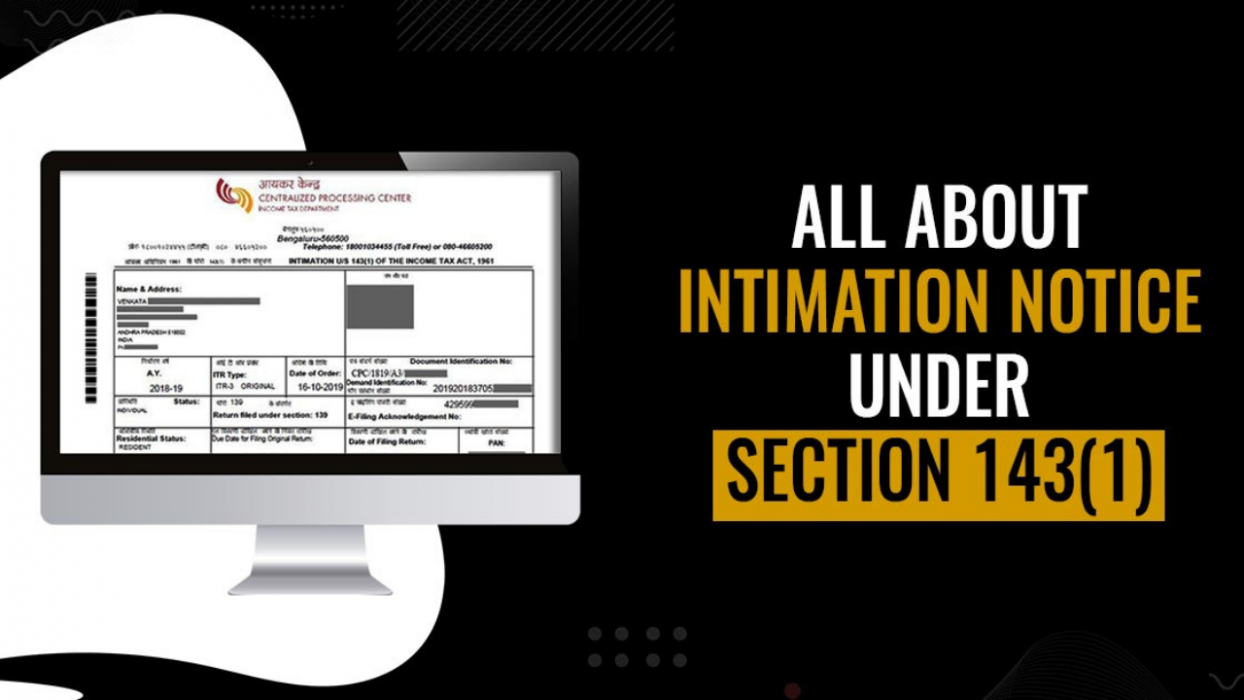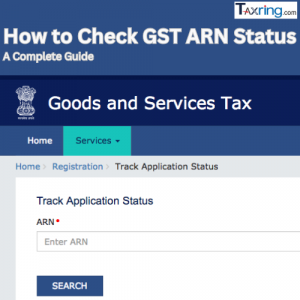
Intimation Under Section 143(1) of the Income Tax Act
What Is Intimation u/s 143(1)?
Intimation under Section 143(1) refers to a communication/notification issued by the Income Tax Department subsequent to the processing of an individual's income tax return. It serves as an initial calculation of the taxpayer's tax liability, indicating whether the tax department's computation aligns with the taxpayer's filed returns.
we can make it more concise and direct, while still conveying the necessary information
Your income tax returns are processed online at the Centralised Processing Centre (CPC), followed by the issuance of an intimation under section 143(1) by the income tax department. If you've received such a notice, don't fret. taxring is ready to assist you. Just email us at contact@taxringcom, and our experts will promptly respond.
When Does One Receive Intimations under Section 143 (1)?
Every assessed shall admit the suggestion under a section 143 (1) upon successful processing of the return.
As mentioned over, it is automated system-driven process that verifies the arithmetical delicacy, information available with the department, details available in return, and the provision of income duty law, and it generates the comparison report.Such automated process eliminates the homemade job of the income duty officer to a great extent.
Section 143(1) intimations are issued when:
1. Tax returns with refund claims undergo departmental adjustments.
2. Additional tax or interest is owed by the taxpayer.
3. Return processing concludes without any demand or refund.
How Will I Receive This Notice
You'll receive notices under Section 143(1) via email to your registered address or through your account on the income tax e-filing portal. Additionally, you might get an SMS notification on your registered mobile number once the intimation is dispatched. Keeping your contact details, especially email and mobile number, current and accurate when filing income tax returns (ITR) is crucial.
Sample of an Intimation under 143(1)
You'll get Section 143(1) notices via email or your account on the income tax e-filing portal. You may also receive an SMS notification on your registered mobile number. Keeping your contact details up-to-date when filing your income tax returns (ITR) is essential.
What Do Notices under Section 143 (1) Say?
A Section 143(1) notice clarifies if the taxpayer's computed tax aligns with the department's calculations. It details any adjustments made, potentially resulting in additional tax, interest, or refunds. Carefully reviewing the notice is crucial to grasp these adjustments, which might fall into these categories:
1. Conformity: The department's assessment matches your self-assessed tax and claimed deductions, indicating no further tax payment or refunds.
2. Discrepancy: If departmental calculations differ from yours or your declared income sources, a demand notice for additional tax may follow. This could result from mathematical errors or incorrect deductions, leading to a tax liability.
3. Refund: Excess tax payments trigger an income tax refund notice, followed by the refund issuance by the department.
Nature of Adjustments under 143(1)
Under Section 143(1), adjustments can vary and may include:
1. Overlooked income, deductions, or exemptions by the taxpayer.
2. Discrepancies with Form 26AS, such as TDS, advance tax, or self-assessment tax.
3. Reassessment of income, deductions, or tax liability based on available data.
4. Identifying mathematical errors or incorrect claims by the taxpayer.
Time Limit for Issue of 143(1)
The Income Tax Department must issue intimation under Section 143(1) within a specified time frame. Typically, it should be issued within one year from the end of the financial year in which the taxpayer files their income tax return. However, this timeline might be extended if the taxpayer's return is chosen for scrutiny assessment or reassessment.
If you haven't received any intimation under Section 143(1) by the end of a full year
from the close of the fiscal year when you filed your returns, it likely means that your return has been processed without adjustments. In such instances, you can assume that the Income Tax Department has accepted your return.
How to Get an Intimation u/s 143(1) Again?
Taxpayers can easily obtain intimation under Section 143(1) again by following these steps:
1. Log in to the income tax e-filing portal.
2. Navigate to "My Account.
3. Select "View e-Filed Returns/Forms.
4. Choose the relevant assessment year.
5. Click on the acknowledgment number of the tax return needing the intimation.
6. Download the intimation in PDF format.
Where to Find the Password to Open Intimation u/s 143(1)?
Intimations under Section 143(1) are password-protected for security. The password comprises the taxpayer's PAN (in lowercase) and the date of birth or incorporation (in DDMMYYYY format). For example, if your PAN is "ABCDE1234F" and your date of birth is 10th November 1995, the password is "abcde1234f10111995."
How Can I Read an Intimation Received Under Section 143 of the Income Tax Act?
To access an intimation under Section 143:
1. Download from the income tax e-filing portal.
2. Open the PDF.
3. Enter the given password.
4. Review for departmental adjustments and tax details.
Examine the Following Aspects When You Receive an Intimation u/s 143(1)
When you receive an intimation under Section 143(1), follow these steps:
1. Confirm the accuracy of your PAN, name, and address.
2. Compare income, deductions, and exemptions with your tax return.
3. Note any additional tax liability, interest, or refunds.
4. Review departmental adjustments against your original return.
5. Seek professional assistance for any discrepancies.
How to Respond to Income Tax Notice Under Section 143 (1) of the Income Tax Act?
To address an income tax notice under Section 143(1), follow these steps:
1. Comprehend the adjustments and reasons stated in the notice.
2. Prepare a response with explanations, supporting documents, or corrections.
3. Submit your response within the given timeframe online or at a designated office.
4. Retain a copy of your response and submission proof for reference.
How Will I Get the Refund?
When Section 143(1) intimations indicate a refund, the Income Tax Department processes the refund, transferring it directly to the taxpayer's pre-validated bank account linked with their PAN on the e-filing portal. Tracking the refund status online via the official portal is recommended.
Section 143(1) intimations are vital post-income tax return processing, offering an initial assessment of tax liability and Department adjustments. Taxpayers must scrutinize details, respond as needed, and ensure compliance with tax laws.
FAQs on Section 143(1) of Income Tax Act
1. What if I don't receive my Section 143(1) intimation after the specified period?
- If no sum is payable or refundable and no adjustments made, the return acknowledgment acts as the intimation.
2. I received a Rs. 5000 demand notice under Section 143(1). What should I do?
- Verify the reason for tax liability and, if agreed, pay using Tax on regular assessment. If not, submit a response.
3. Why the difference in TDS as per taxpayer and computed under Section 143(1)?
- Discrepancy arises from differing TDS in 26AS and claimed TDS in your tax return. File online rectification under Section 154(1) if your claimed TDS is correct.
4. Disagree with the refund in the intimation order?
- File a revised or rectification return for errors in the original return or the department's order, respectively.
5. How to obtain the Section 143(1) intimation again?
- Log in to the e-filing portal, go to "Income Tax Return," click "View Filed," then "Download Intimation Order."
6. What if I haven't received an intimation order after one year from the relevant assessment year?
- No tax liability or refund indicates the filed ITR acts as your intimation.
Related Articles: What is Income Tax Return & filling ITR / File Tax Return




